Maritime
Ipswich, 1982
The Maritime Ipswich
Committee was formed to organise a year-long series of events in 1982
as
part of the national Maritime England Initiative. These events were
based in the R&W Paul's Home Warehouse next to the Custom House.
The success of this festival led to the foundation of The Ipswich Maritime Trust (see Links). In the same year a visionary plan for the then run-down,
post-industrial Wet Dock was prepared, with suggestions on its future
development. The newly rejuvenated Waterfront is the result of
Ipswich’s determination to make the most out of the Wet Dock.
This first sequence of images was
taken (as 35mm slides) by David Gaylard in the summer of 1982 (thanks
to Chris Wiltshire for digitising them for inclusion on this page
almost forty years later).
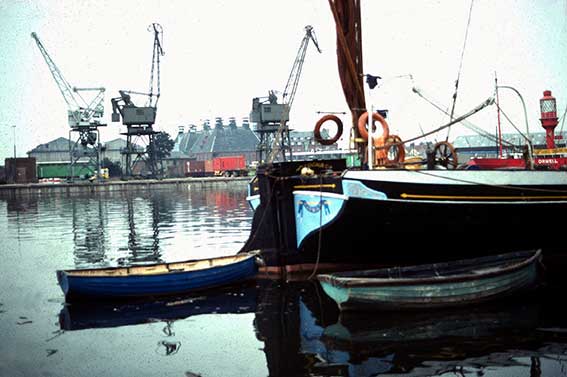 1982 images courtesy David Gaylard
1982 images courtesy David Gaylard
Above: The name boards on barges:
'CENTAUR'
'WARWICK' (on a blue banner).
Felaw Maltings, with its malt kiln vents, can be seen on
the other side of the Wet Dock and New Cut (see below for a close-up of
the buildings). The huge
maltings were built in 1904 and extended in 1911 on Felaw Street and on the Stoke Quay bank of
New Cut so that barley imported by ship – clearly East Anglian farmers
weren't producing enough to satisfy demand for malt – could be unloaded
nearby. By the early 1980s (around time of these photographs) the
processing of barley had been moved elsewhere and the buildings lay
empty and vandalised for years. As the decay proceeded, many residents
were surprised and delighted to see a complete refurbishment of the
complex in the late 1990s to become the Suffolk Enterprise Centre.
Dwarfed by the buildings is the Steamboat Tavern across Felaw Street
and it may be true that the influx of trainers, trainees and office
workers at the centre saved the public house from closure when this
side of the docks experienced the huge loss of heavy engineering (Ransomes & Rapier, Cocksedge) and other
industries in the 1980s.
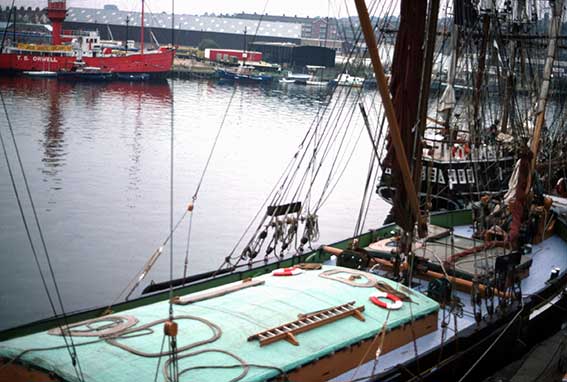
Above: the former lightship T.S.
(Training Ship) Orwell was used for several years by
the Sea Cadets. The yellow banner shows sponsorship by Jack White
Organs, a musical instrument shop which operated for many years in Fore
Hamlet. To the right of the old lightship – and to the right of the red
container – is one of the large molasses tanks owned by the British
Fermentation Products yeast company. It has reinforced sides and a
curved roof (close-up below). An album of photographs of the Yeast
Factory can be viewed on the Ipswich Society Image Archive.

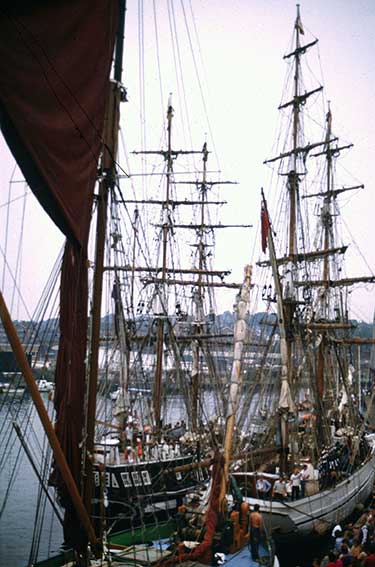
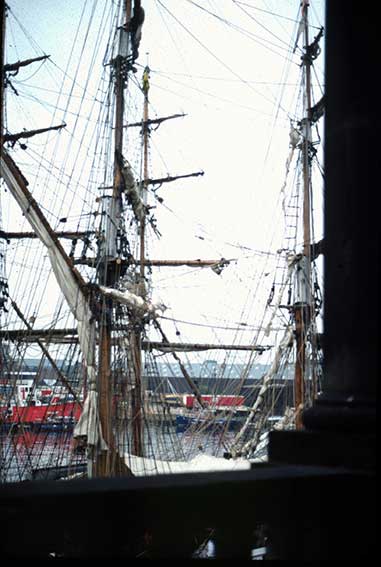
Above: beyond the barge are two masted vessels moored
side-by-side on Common Quay. Above right: masts, rigging, lightship and
Wet Dock from the balcony of the Custom House.
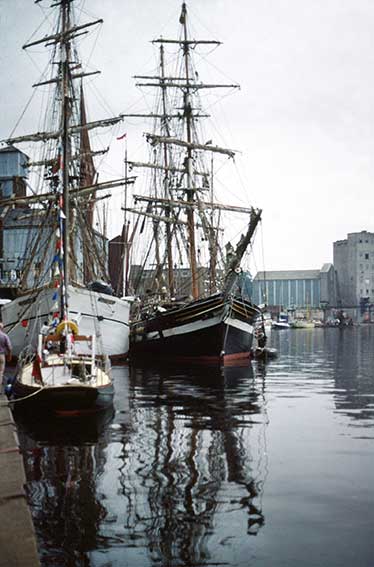
Above: the edge of Albion Wharf is visible at the extreme left
with the same two masted vessels.
Behind the
white vessel is Paul’s Home Warehouse which, once abandoned by the
malsters, was used to house an exhibition on the theme of the maritime
story of the town. Beyond that is Neptune Quay
and the Eastern Counties Farmers animal feed mill.

Above: beyond the inverted trident and the dragon figurehead is
stacked timber on William Brown’s quay (Tovell’s Quay) on the Island
site and a gasometer on Gasworks Quay beyond.
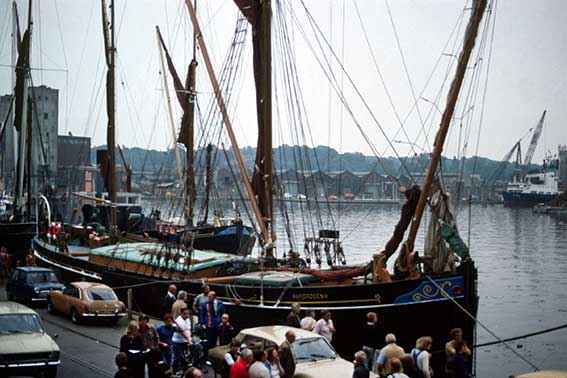
Above: with the Sailing Barge
Hydrogen in the foreground on Common Quay, we see the expanse of
the Wet Dock with, on Orwell Quay, the Eastern Counties Farmers feed
mill and Ransomes Sim & Jefferies Orwell Works engineering sheds.
The trees of Holywells Park rise up beyond.
1982 greetings card
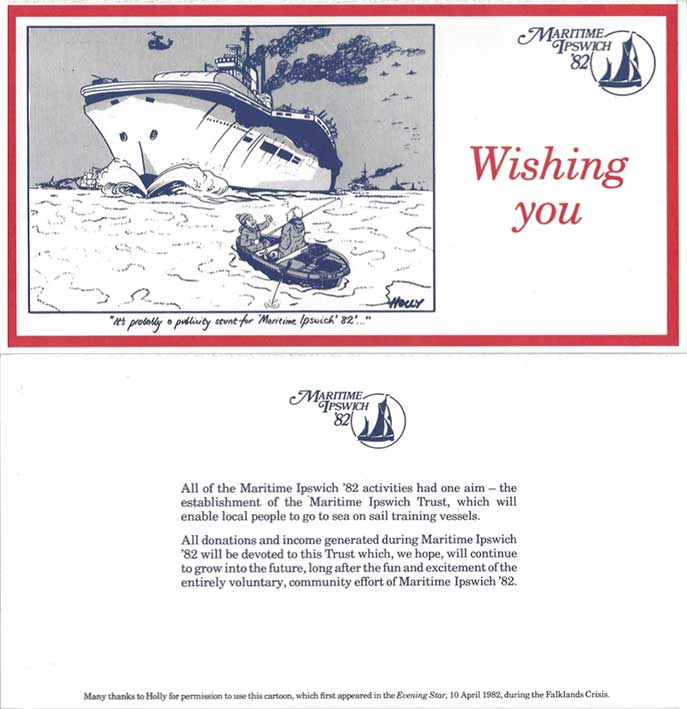 1982
greetings card courtesy John Norman
1982
greetings card courtesy John Norman
"It's probably a publicity
stunt for 'Maritime Ipswich '82'..."
The above greetings card is a grim reminder (small print at the bottom
of the back of the card) that the festival coincided with 'the
Falklands crisis'. The actual conflict began on 2 April 1982, when
Argentina invaded and occupied the Falkland Islands, followed by the
invasion of South Georgia the next day. On 5 April the British
government dispatched a naval task force to engage the Argentine Navy
and Air Force before making an amphibious assault on the islands. The
conflict lasted 74 days and ended with an Argentine surrender on 14
June, returning the islands to British control. In total, 649 Argentine
military personnel, 255 British military personnel, and three Falkland
Islanders died during the hostilities.
Another example of the festival branding is the scholarly
booklet by Robert Simper, illustrated by Roger Finch: Sail on the Orwell, Maritime
Ipswich '82, 1982.
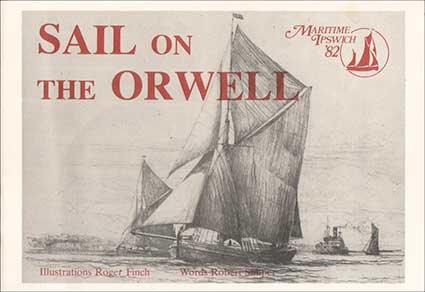
More photographs of the Maritime
Ipswich Festival from July 1982
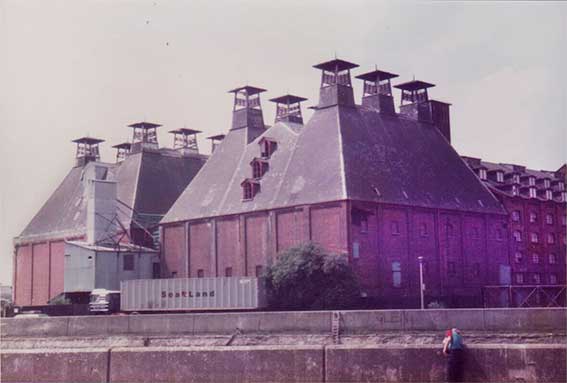 July 1982
images
July 1982
images
Above: is a closer view of Felaw Maltings towards the
end
of their operating life. At this time pedestrians could walk down New
Cut East, almost to the Harbour Master's Office to see this aspect
across New Cut and the concrete flood wall. It was
later gated by ABP (Associated British Ports) near to the fork in the
road for Ipswich Haven Marina.
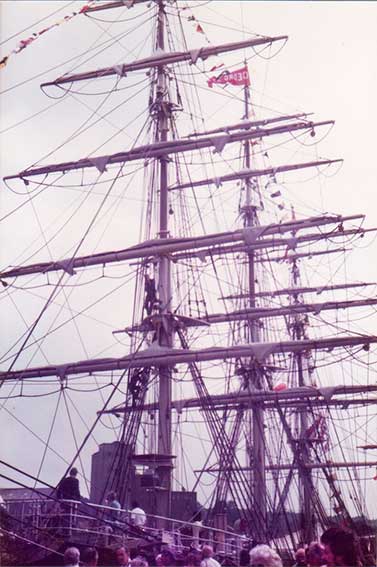
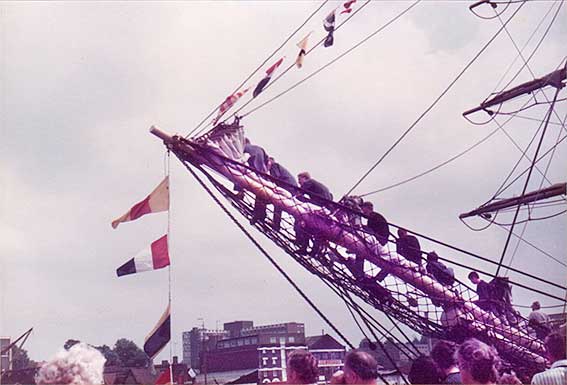
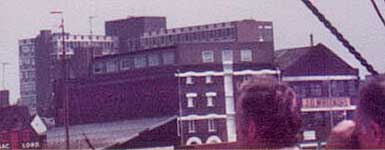
Above left: trainees sit along the bowsprit of one of the
visiting vessels. In the distance (see close-up) is the John Good building, unlettered at this time
but with its sloping roofed lean-to section to the left, then the works
bearing the
sign 'J.D. WHITMORE' (readable between the heads of the two onlookers),
the sail-making company; this building later became the Neptune Pool
Club. Behind it
all is the large Suffolk College building which opened
in 1962.
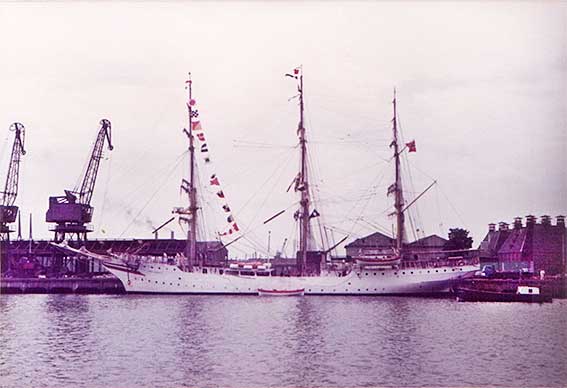
Above: the large white-hulled ship is moored at Tovell's Wharf
with Felaw Maltings visible in the right background.
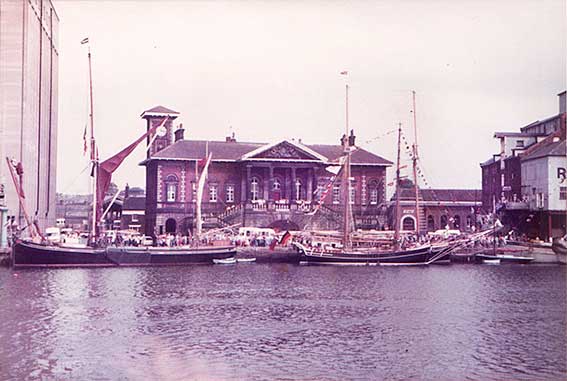
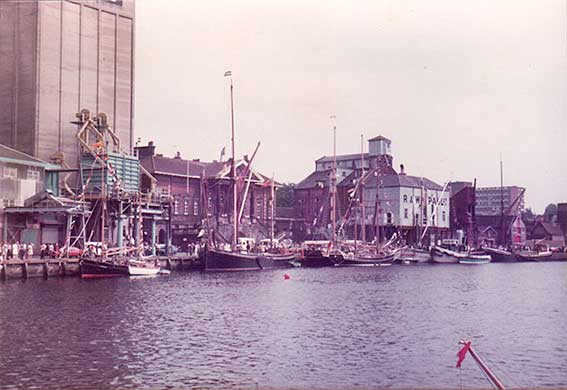
Above: two views from the Island site of the Custom House and
Common Quay with visiting vessels. The longer view shows (from left):
Paul's maltings silo and part of the
collonade, the Custom House,
Pauls' Home Warehouse Lettered 'R W PAUL LTD.', a brown
structure with a slping roof we'd like to identify, Christie's warehouse, Wherry Quay with
the Suffolk College block behind, the Malt Kiln (later Isaac's).
See The changing dock page for
a close-up of the Home Warehouse and its sign.
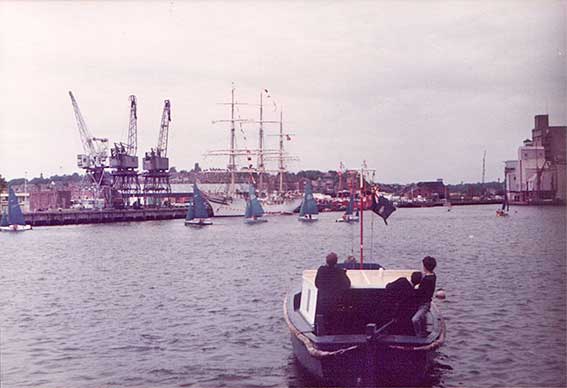
Above: the expanse of the Wet Dock photographed from Ransome's
Quay. Sailing dinghies are in front of the white vessel seen in the
shot above and the old lightship. It's tempting to assume that the
three large cranes on the left are the source of the name 'Three Cranes
Wharf' on the Island, but they appear to be in the wrong place.
Cranfield's Flour mill is on the
right, situated on Albion Wharf.
The lantern of Stoke Bridge maltings
is visible on the skyline.
Related pages:
Christie's
warehouse
Bridge
Street
Burton Son & Sanders ' Paul's
College Street
Coprolite
Street
Cranfield's
Flour Mill
Custom House
Trinity
House buoy
Edward
Fison Ltd
Ground-level dockside furniture
on: 'The
island', the northern quays
and Ransome's
Orwell Works
Ipswich
Whaling Station?
Isaac Lord
Neptune Inn
clock, garden
and interior
Isaac
Lord 2
The Island
John Good and Sons
Merchant
seamen's memorial
The Mill
Nova Scotia
House
New Cut East
Paul's malting company
Quay
nameplates
Ransomes
Steam
Packet Hotel
Stoke
Bridge(s)
Waterfront
Regeneration Scheme
Wolsey's
Gate
A chance to
compare
Wet Dock 1970s with 2004
Wet Dock maps
Davy's
illustration of the laying of the Wet Dock lock foundation stone,
1839
Outside
the Wet Dock
Home
Please email any comments and contributions by clicking here.
Search Ipswich
Historic Lettering
©2004 Copyright
throughout the Ipswich
Historic Lettering site: Borin Van Loon
No reproduction of text or images without express
written permission
 1982 images courtesy David Gaylard
1982 images courtesy David Gaylard






 1982
greetings card courtesy John Norman
1982
greetings card courtesy John Norman
 July 1982
images
July 1982
images





